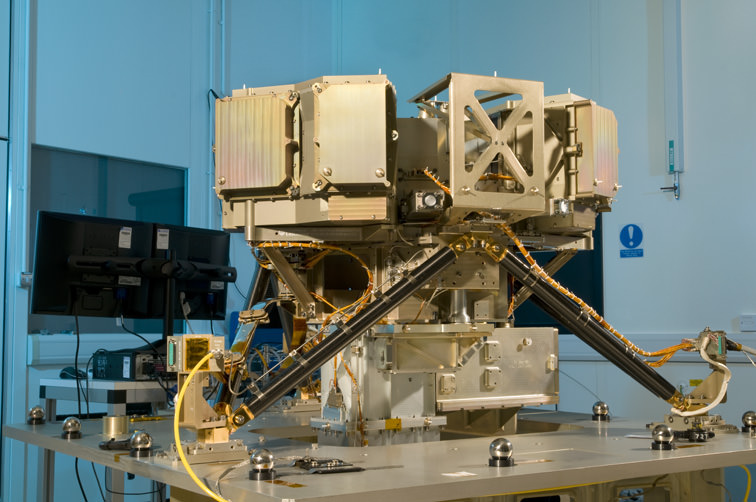The James Webb Space Telescope continues to deliver stunning images of the Universe, demonstrating that the years of development and delays were well worth the wait! The latest comes from Judy Schmidt (aka. Geckzilla, SpaceGeck), an astrophotographer who processed an image taken by Webb of the barred spiral galaxy NGC 1365. Also known as the Great Barred Spiral Galaxy, NGC 1365 is a double-barred spiral galaxy consisting of a long bar and a smaller barred structure located about 56 million light-years away in the southern constellation Fornax.
Continue reading “A New Image From Webb Shows Galaxy NGC 1365, Known to Have an Actively Feeding Supermassive Black Hole”Brrr. Webb’s MIRI has Reached 6.4 Kelvin, Just a few Degrees Above Absolute Zero

The latest update on the James Webb Space Telescope literally sent a shiver down my spine! The telescope’s Mid-Infrared Instrument (MIRI) has now reached its operating temperature of a chilly 7 kelvins (7 deg above absolute 0, or -266 degrees C,-447 degrees F).
MIRI has now been turned on and is undergoing initial checkouts.
Continue reading “Brrr. Webb’s MIRI has Reached 6.4 Kelvin, Just a few Degrees Above Absolute Zero”It’s Been Three Months in Deep Space, and Webb’s Mid-Infrared Instrument is Still Cooling Down
The James Webb Space Telescope continues to cool down out at its location at Lagrange Point 2, about 1.5 million kilometers from Earth. Since JWST is an infrared telescope, it needs to operate at extremely low temperatures, less than 40 K (-223 degrees Celsius, -369.4 degrees Fahrenheit). But one instrument needs to be even colder.
To operate at peak efficiency, Webb’s Mid-Infrared Instrument (MIRI) must be cooled to a chilly 7 K (-266 C, -447 F). And it will need a little help to reach those frigid temps.
Continue reading “It’s Been Three Months in Deep Space, and Webb’s Mid-Infrared Instrument is Still Cooling Down”Meet MIRI, Infrared Camera for Webb Telescope

Our friend Will Gater from the BBC’s Sky At Night Magazine had the chance to get a behind-the-scenes tour of the facility that is building the Mid-Infrared Instrument on the long-awaited James Webb Space Telescope. You’ll meet MIRI inside clean room at the Rutherford Appleton Laboratory in the UK, before it is packaged up and sent over to NASA Goddard in the US. You’ll also hear from some of the scientists involved in the project.
MIRI is expected to make important contributions to all four of the primary science themes for JWST: 1.) discovery of the “first light”; 2.) assembly of galaxies: history of star formation, growth of black holes, production of heavy elements; 3.) how stars and planetary systems form; and 4.) evolution of planetary systems and conditions for life.
Lead image caption: MIRI, ( Mid InfraRed Instrument ), during ambient temperature alignment testing in RAL Space’s clean rooms. Image Credit: STFC/RAL Space


